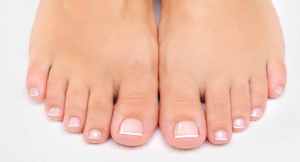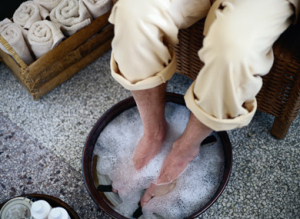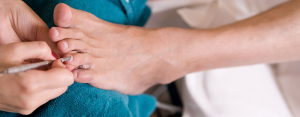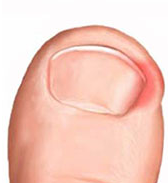 QUEZON City, Philippines (September 23) – It’s uncomfortable, irritating, and hurtful having a little piece of sharp and spiky hitch peeking or hiding from the deepest corner of your fingernails. But what’s worse is that you know that that little piece of torture living in your nails can infect your nails and cause it to swell. But of course you don’t want that to happen to you so we better prevent it before it happens, after all we should always remember that prevention is better than cure. So here’s what to do if you don’t want to have it:
QUEZON City, Philippines (September 23) – It’s uncomfortable, irritating, and hurtful having a little piece of sharp and spiky hitch peeking or hiding from the deepest corner of your fingernails. But what’s worse is that you know that that little piece of torture living in your nails can infect your nails and cause it to swell. But of course you don’t want that to happen to you so we better prevent it before it happens, after all we should always remember that prevention is better than cure. So here’s what to do if you don’t want to have it:
- Cut your nails straight across; do not cut them too short or too low at the sides. The corner of the nail should be visible above the skin. (Tip: it is easier to cut nails after a bath or shower, when they are soft.)
- Keep your feet clean and dry. Let air get to your toes when possible.
- Avoid tight shoes and use cotton socks rather than synthetic.
- If you have diabetes, you should take extra care when cutting your nails:
- Cut the nail straight across or follow the shape of the end of the toe, but be very careful not to cut too low at the sides as above.
- Gently file any sharp edges with a nail file.
- If you have any loss of feeling in your feet, you should visit a chiropodist (podiatrist) to have your nails trimmed, rather than doing it yourself.
- If you can’t see your feet or nails very well, you should visit a chiropodist (podiatrist) to have your nails trimmed, rather than doing it yourself.

But if you see or if you feel like there is a tiny wicked thing stitching you nails then here’s what to do to make sure or to prevent it from becoming worse:
- Soak the toe in water for 10 minutes to soften the folds of skin around the affected nail.
- Then, using a cotton wool bud, push the skin fold over the ingrown nail down and away from the nail. Do this starting at the root of the nail and move the cotton wool bud towards the end of the nail.
- Repeat each day for a few weeks, allowing the nail to grow.
- As the end of the nail grows forward, push a tiny piece of cotton wool or dental floss under it to help the nail grow over the skin and not grow into it. Change the cotton wool or dental floss each time you soak your foot.
- Do not cut the nail but allow it to grow forward until it is clear of the end of the toe. Then cut it straight across and not rounded off at the end.
There are variations on this method – the principle is to keep the skin from growing over the edge of the nail.
Of course, all things happen for a reason, it will not just steam on your nails all of a sudden for no reason or whenever it wants to appear. There are certain reasons why ingrown nails develop in our feet or fingers and here are some of those reasons:
- Tight-fitting shoes or high heels cause the toes to be compressed together and pressure the nail to grow abnormally.
- Improper trimming of toenails can cause the corners of the nail to dig into the skin. Nails should be trimmed straight across, not rounded.
- Disorders such as fungal infections of the nail can cause a thickened or widened toenail to develop.
- Either an acute injury near the nail or anything that causes the nail to be damaged repetitively (such as playing soccer) can also cause an ingrown nail.
- If a member of your family has an ingrown toenail, then you are more likely to develop one, too. Some people’s nails are normally more rounded than others or the underlying bone can be more “upturned,” which increases the chance of developing ingrown nails.
- Early in the course of an ingrown toenail, the end of the toe becomes reddened and painful with mild swelling. There is no pus or drainage. It may feel warm to the touch, but you will not have a fever.
- Later, extra skin and tissue will grow around the sharp point of the nail. A yellowish drainage may begin. This is the body’s response to the trauma of a nail irritating the skin and is not necessarily an infection.
- Sometimes an infection develops. In this case, the swelling will become worse, and there may be white- or yellow-colored drainage (pus) from the area. A lighter-colored area of the skin may be surrounded by red skin. A fever may develop, although this is unusual.
Ingrown toenails are usually treated by a GP or a person qualified to diagnose and treat foot disorders called podiatrist.
But just like what we mention a while ago, it isn’t just toe nails that can develop ingrown nail but also our fingers. Ingrown fingernail is medically known as Onychocryptosis. Just like ingrown toe nail, ingrown fingernail grow into the skin surrounding it. If you have a fingernail ingrown then you can just simply use vinegar to dispose the ingrown. Add vinegar (1 part) to the water (4 parts) then soak your hands into it and let it be in there for anout 15-20 minutes and then take it out and dry it properly. You can repeat it twice or thrice a day until you feel that the ingrown is soft and ready to be removed. If you aren’t comfortable with vinegar, you can take some warm water, put it in a bowl and soak the affected finger for about 15-20 minutes also, take it out and dry it properly and repeat the procedure 3-4 times a day. Always remember that your fingernails should remain dry for if your fingers are wet, it may lead to growth of bacteria or fungi and will give you infection
There are some times that if the nail persists in growing into the skin, slightly more drastic measures might be required. Certain cases involve removal of a larger portion of the nail, or even the entire nail permanently.

Take care of your nails just as much as how you value your hair. You may visit the salon for a manicure or a pedicure to have it cleaned all the time but it still best if you will not do that too often for the pushing and pulling of your nails will make your fingernails thinner and might damage your nails and make it fragile. Some salons do remove your ingrown but always make sure that their tools are well cleaned before using it to your nails [it might infect your nails if it’s not]. Don’t be too harsh with your fingernails because it will still be you who’ll get hurt if you do.
Sources:
file:///E:/SCHOOL/OJT%20articles/ass/ingrown/Ingrowing%20Toenails%20(Ingrown%20Toenails).%20Signs%20and%20Treatment%20_%20Patient.html
http://www.emedicinehealth.com/ingrown_toenails/page2_em.htm
http://www.emedicinehealth.com/ingrown_toenails/page5_em.htm
file:///E:/SCHOOL/OJT%20articles/ass/ingrown/Ingrown%20Toenails.html#
(written by Donna Marie Rodriguez, edited Jay Paul Carlos, additional research by Lovely Ann Cruz)








